Looking to be more sustainable? Here’s our top 10 tips to reduce your carbon emissions.
Reducing our carbon emissions is one of the key components of net zero strategies across the world to slow down the effects of climate change.
To limit global warming to 1.5C by 2050, the Intergovernmental Panel on Climate Change (IPCC) says a “rapid and deep” reduction in “all sectors” of the global economy is required.
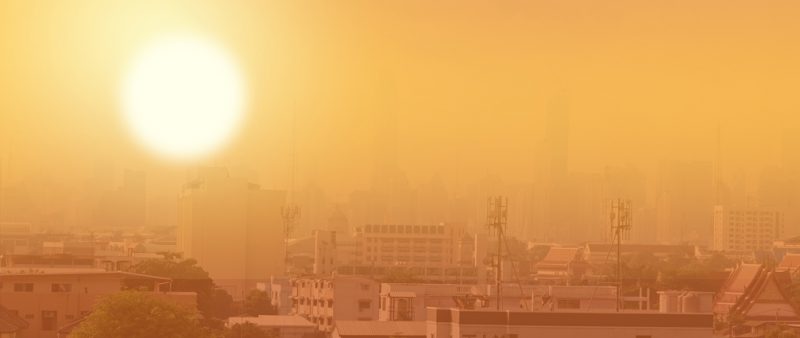
Recommendations from the IPCC and, indeed, reports from both the UK’s Environment Audit Committee (EAC) and former energy minister and Tory MP Chris Skidmore, include “substantial” reductions in fossil fuels, improving energy efficiency, and increased investment in renewable energy sources.
Currently, everyone in the UK contributes an average of around 5.15 tons of carbon emissions each per year. Not only is this double the global average, but it is also the equivalent of driving nearly 12,000 miles in an average-size petrol car.
While reducing one’s own personal carbon footprint isn’t going to single-handedly solve the climate crisis, it doesn’t mean giving up and continuing to emit further emissions when certain lifestyle changes can reduce that impact significantly.
Personal actions can also help combat feelings of eco-anxiety as small things can lead to bigger change. Here’s how to reduce your carbon footprint on a day-to-day basis.
Fly less
Obviously, flying less is a major step to reducing your carbon footprint – especially if you’re a frequent flyer or travel quite a long way each time.

A long-haul return flight between London and New York will emit 1.7 tons of carbon dioxide, the equivalent of driving 3,800 miles.
Driving to your destination, if possible, would emit less carbon dioxide than flying but taking a train would be the most effective way of curbing carbon emissions.
You can compare different modes of transport between your starting point and destination using Eco Passenger, which will show you how many emissions you can save by flying instead.
Your support changes lives. Find out how you can help us help more people by signing up for a subscription.
Drive less
Driving has a significant impact on your carbon footprint.

To go without a car for one year could reduce your emissions by 2.4 tons of carbon dioxide – 41 per cent more than a return flight from London to New York.
Taking public transport, walking, or cycling, are good alternatives to driving, especially for short distances and trips to the shops. But, in rural areas and deprived communities underserved by public transport options, a car might be the only option to get around.
If you live in a city like London, there are many other ways of getting around that don’t involve a car.
If you have to use a car, spreading the carbon burden by sharing journeys with other people is a good way of keeping your footprint down, or if you can afford to, consider switching to an electric car. Even though electric cars are powered by electricity from fossil fuels, its overall carbon emissions are lower.
Buy less and buy local
Overconsumption is a massive issue in today’s world,

contributing to waste and an increased carbon footprint due to shipping and transporting cheap goods across the world.
Fast fashion, with dresses costing 30p from Pretty Little Thing, is very harmful to the planet. The fast fashion industry is responsible for 10 per cent of global emissions.
As such, one of the best ways of reducing waste and lowering your carbon footprint is to buy less and extend the life of the items you already have – climate action organization Wrap says that extending the life of your clothes with nine months of active use would reduce your carbon footprint by 20 to 30 per cent.
If you do have to buy something new, one way of reducing your carbon footprint is to ensure you are buying from sustainable and ethical sources, and from local shops rather than giant conglomerates sending your items by plane or boat from hundreds of miles away.
Reuse and recycle
To stop buying things at all is not always possible or likely.
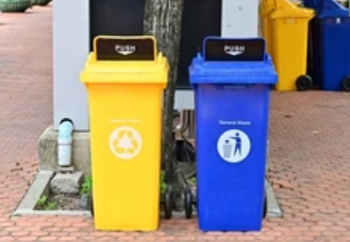
So, when we do buy things, it’s worth thinking about their life cycles and how they can be reused in the future.
Buying reusable items rather than single-use ones is a good start, as well as considering whether the things you buy are made from recyclable materials so that they can be recycled in the future when they do have to be thrown away.
Stop buying plastic
Another way of reducing your carbon footprint and waste is to stop buying plastic or items wrapped in plastic.
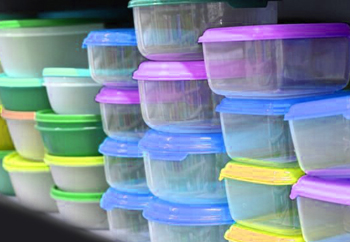
According to the Centre for International Environmental Law, the creation of plastic could result in 1.34 billion tons of greenhouse gas emissions by 2030.
Many supermarkets now offer loose items instead, and refill shops are popping up across the country where you can bring containers to buy milk, cereal, and pasta.
Try to choose your items carefully by looking for products that are not covered in plastic and you can significantly reduce your contribution to greenhouse gas emissions and plastic waste.
Stop wasting food
An estimated 1.3 billion tons of food every year is wasted in the UK,

and food waste is a major global problem. Around 8 per cent of the world’s greenhouse gas emissions come from food waste.
Therefore, thinking more carefully about your consumption of food and how much you’re wasting on a daily basis is a great way of reducing your emissions. Though not all emissions can be blamed on individual households, this is a small step towards fixing the issue.
Checking your fridge and cupboards carefully, planning out your meals, measuring your portions, and eating leftovers more regularly are great steps to reduce food waste.
Start composting
Composting is also part-and-parcel of reducing food waste and your carbon footprint.

One study estimates the greenhouse gas emissions released from food dumped into a landfill is seven times as much as the emissions from composting the same food.
Composting leftover food into a well-maintained bin that lets in oxygen will reduce the amount of methane released into the atmosphere.
Go plant-based or vegan
Becoming plant-based or vegan will have a massive impact on your
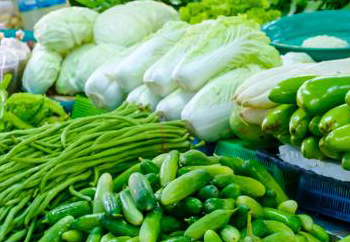
carbon footprint and the climate as meat and dairy products are responsible for 60 per cent of global greenhouse gas emissions, according to research from 2018.
Researchers from the University of Oxford previously found following a plant-based diet can lead to a carbon footprint reduction of over 70 per cent, while researchers at Loma Linda University in California said that vegans have the smallest carbon footprint overall.
This doesn’t mean you have to cut out cheese or bacon completely, but there are a number of products out there for vegan and plant-based diets, and reducing your consumption of meat and dairy products could be extremely beneficial.
Make your home more energy-efficient
In the UK, over one-fifth of our carbon emissions come from heating and lighting our homes, and using appliances.
Unfortunately, many of the homes

in the UK are not as energy-efficient as they should be, meaning our carbon footprints are higher than they could be – not to mention our bills.
Therefore, reducing carbon emissions and energy usage at home is important to consider.
To do this, using heating controls to make sure you’re not using more than you need, upgrading your heating system to a heat pump if possible, insulating your home, and draught-proofing your windows and floorboards are good steps.
You can also look at replacing the bulbs in your house with lower-energy LED lights, as well as buying energy-efficiency appliances when your vacuum or toaster finally throws in the towel.
Switch to renewable energy
Some electricity and gas providers
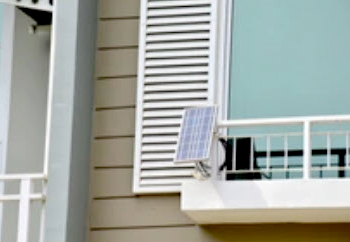
have the option to switch, at least partly, to renewable energy sources. Of course, this can
be a postcode lottery depending on what providers you have in your area as well as whether it is an affordable option.
If renewable energy is currently not available, you can advocate for it with your MP or your power company.
Additionally, you could generate your own energy with solar panels on the roof for more long-term reductions and energy security.
การกระทำ 10 อย่างที่ช่วยลดการปล่อยก๊าซคาร์บอนไดออกไซด์
1. บินให้น้อยลง
2. ขับรถให้น้อยลง
3. ซื้อของให้น้อยลงและซื้อของในท้องถิ่น
4. การ recycle และการนำของกลับมาใช้ใหม่
5. เลิกซื้อของที่ทำด้วยพลาสติก
6. ไม่กินทิ้งๆขว้างๆ
7. ทำปุ๋ยหมักใช้เอง
8. กินโปรตีนพืช(แทนเนื้อสัตว์)หรือกินมังสะฯ
9. ปรับปรุงบ้านให้สามารถใช้พลังงานได้อย่างมีประสิทธิภาพ
10. เปลี่ยนไปใช้พลังงานหมุนเวียน (ลม น้ำ แสงแดด)
การลดการปล่อยคาร์บอนเป็นองค์ประกอบสำคัญอย่างหนึ่งของกลยุทธ์การปล่อยคาร์บอนสุทธิเป็นศูนย์ทั่วโลกเพื่อชะลอผลกระทบของการเปลี่ยนแปลงสภาพภูมิอากาศ
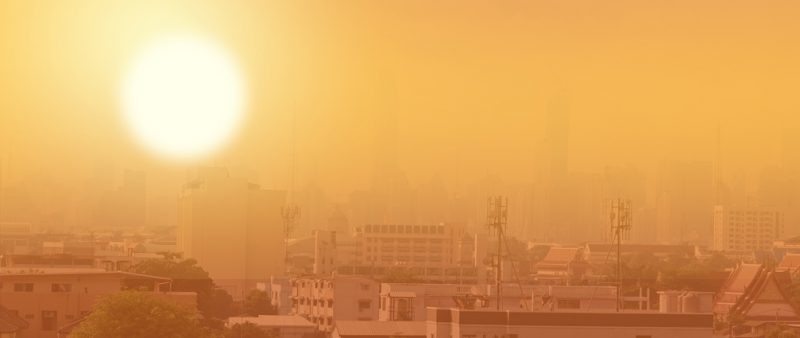
เพื่อจำกัดภาวะโลกร้อนให้อยู่ที่ 1.5 องศาเซลเซียสภายในปี 2050 คณะกรรมการระหว่างรัฐบาลว่าด้วยการเปลี่ยนแปลงสภาพภูมิอากาศ (IPCC) กล่าวว่าจำเป็นต้องลดการปล่อยคาร์บอนใน “ทุกภาคส่วน” ของเศรษฐกิจโลกอย่าง “รวดเร็วและลึกซึ้ง”
คำแนะนำจาก IPCC และรายงานจากทั้งคณะกรรมการตรวจสอบสิ่งแวดล้อม (EAC) ของสหราชอาณาจักรและอดีตรัฐมนตรีพลังงานและสมาชิกรัฐสภาพรรคอนุรักษ์นิยม คริส สคิดมอร์ รวมถึงการลดการใช้เชื้อเพลิงฟอสซิล “อย่างมาก” การปรับปรุงประสิทธิภาพการใช้พลังงาน และเพิ่มการลงทุนในแหล่งพลังงานหมุนเวียน
ปัจจุบัน ทุกคนในสหราชอาณาจักรมีส่วนสนับสนุนการปล่อยคาร์บอนโดยเฉลี่ยประมาณ 5.15 ตันต่อปี ซึ่งไม่เพียงแต่เป็นสองเท่าของค่าเฉลี่ยทั่วโลก แต่ยังเทียบเท่ากับการขับรถเกือบ 12,000 ไมล์ด้วยรถยนต์เบนซินขนาดเฉลี่ย แม้ว่าการลดปริมาณการปล่อยคาร์บอนของตัวเราเองจะไม่สามารถแก้ปัญหาภาวะวิกฤตด้านสภาพอากาศได้เพียงลำพัง แต่ก็ไม่ได้หมายความว่าเราต้องยอมแพ้และปล่อยคาร์บอนต่อไปในขณะที่การเปลี่ยนแปลงวิถีชีวิตบางอย่างสามารถลดผลกระทบดังกล่าวได้อย่างมาก
การกระทำส่วนตัวยังช่วยบรรเทาความวิตกกังวลเกี่ยวกับสิ่งแวดล้อมได้ เพราะสิ่งเล็กๆ น้อยๆ อาจนำไปสู่การเปลี่ยนแปลงครั้งใหญ่ได้ นี่คือวิธีลดปริมาณการปล่อยคาร์บอนในแต่ละวัน
บินน้อยลง
แน่นอนว่าการบินน้อยลงเป็นก้าวสำคัญในการลดปริมาณการปล่อยคาร์บอน โดยเฉพาะอย่างยิ่งหากคุณบินบ่อยหรือเดินทางไกลในแต่ละครั้ง
การบินระยะไกลระหว่างลอนดอนและนิวยอร์กจะปล่อยคาร์บอนไดออกไซด์ 1.7 ตัน ซึ่งเทียบเท่ากับการขับรถ 3,800 ไมล์

หากเป็นไปได้ การขับรถไปยังจุดหมายปลายทางจะปล่อยคาร์บอนไดออกไซด์น้อยกว่าการบิน แต่การนั่งรถไฟจะเป็นวิธีที่มีประสิทธิภาพที่สุดในการลดการปล่อยคาร์บอน
คุณสามารถเปรียบเทียบวิธีการขนส่งต่างๆ ระหว่างจุดเริ่มต้นและจุดหมายปลายทางของคุณได้โดยใช้ Eco Passenger ซึ่งจะแสดงให้คุณเห็นว่าการบินแทนจะช่วยลดการปล่อยคาร์บอนได้มากเพียงใด การสนับสนุนของคุณเปลี่ยนชีวิต ค้นหาวิธีที่คุณสามารถช่วยให้เราช่วยเหลือผู้คนได้มากขึ้นโดยสมัครรับข้อมูล
ขับรถน้อยลง
การขับรถส่งผลกระทบอย่างมากต่อปริมาณการปล่อยคาร์บอนของคุณ การไม่ใช้รถยนต์เป็นเวลาหนึ่งปีอาจช่วยลดการปล่อยก๊าซคาร์บอนไดออกไซด์ได้ถึง 2.4 ตัน ซึ่งมากกว่าการบินกลับจากลอนดอนไปนิวยอร์กถึง 41 เปอร์เซ็นต์
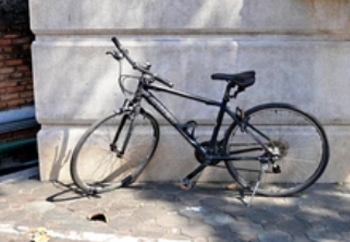
การใช้บริการขนส่งสาธารณะ การเดินหรือการปั่นจักรยานถือเป็นทางเลือกที่ดีแทนการขับรถ โดยเฉพาะในระยะทางสั้นๆ และการเดินทางไปร้านค้า แต่ในพื้นที่ชนบทและชุมชนที่ขาดแคลนบริการขนส่งสาธารณะ รถยนต์อาจเป็นทางเลือกเดียวในการเดินทาง
หากคุณอาศัยอยู่ในเมืองอย่างลอนดอน มีวิธีอื่นๆ อีกมากมายในการเดินทางที่ไม่ต้องใช้รถยนต์
หากคุณจำเป็นต้องใช้รถยนต์ การแบ่งภาระการปล่อยคาร์บอนด้วยการแบ่งปันการเดินทางกับผู้อื่นถือเป็นวิธีที่ดีในการลดปริมาณการปล่อยคาร์บอน หรือหากคุณมีเงินเพียงพอ ก็ลองพิจารณาเปลี่ยนมาใช้รถยนต์ไฟฟ้า แม้ว่ารถยนต์ไฟฟ้าจะขับเคลื่อนด้วยไฟฟ้าจากเชื้อเพลิงฟอสซิล แต่การปล่อยคาร์บอนโดยรวมจะต่ำกว่า
ซื้อให้น้อยลงและซื้อของในท้องถิ่น
การบริโภคมากเกินไปเป็นปัญหาใหญ่ในโลกปัจจุบัน ส่งผลให้เกิดขยะและเกิดการปล่อยคาร์บอนเพิ่มขึ้นเนื่องจากการขนส่งและขนส่งสินค้าราคาถูกไปทั่วโลก

แฟชั่นฟาสต์แฟชั่น เช่น ชุดเดรสราคา 30 เพนนีจาก Pretty Little Thing เป็นอันตรายต่อโลกมาก อุตสาหกรรมแฟชั่นฟาสต์แฟชั่นมีส่วนทำให้เกิดการปล่อยคาร์บอนทั่วโลกถึง 10 เปอร์เซ็นต์
ดังนั้น วิธีที่ดีที่สุดวิธีหนึ่งในการลดขยะและลดการปล่อยคาร์บอนคือการซื้อน้อยลงและยืดอายุการใช้งานของสิ่งของที่คุณมีอยู่แล้ว องค์กรเพื่อสิ่งแวดล้อม Wrap กล่าวว่าการยืดอายุการใช้งานเสื้อผ้าของคุณด้วยการใช้งานจริงเป็นเวลา 9 เดือนจะช่วยลดการปล่อยคาร์บอนได้ 20 ถึง 30 เปอร์เซ็นต์
หากคุณจำเป็นต้องซื้อของใหม่ วิธีหนึ่งในการลดการปล่อยคาร์บอนคือการซื้อของจากแหล่งที่ยั่งยืนและมีจริยธรรม และจากร้านค้าในท้องถิ่น ไม่ใช่การซื้อของจากบริษัทยักษ์ใหญ่ที่ส่งสินค้าของคุณทางเครื่องบินหรือเรือจากระยะทางหลายร้อยไมล์
นำกลับมาใช้ใหม่และรีไซเคิล
การหยุดซื้อของไม่ใช่เรื่องที่เป็นไปได้หรือไม่น่าจะเป็นไปได้เสมอไป ดังนั้น เมื่อเราซื้อของ เราควรจะคิดถึงวงจรชีวิตของสิ่งของและวิธีนำกลับมาใช้ใหม่ในอนาคต
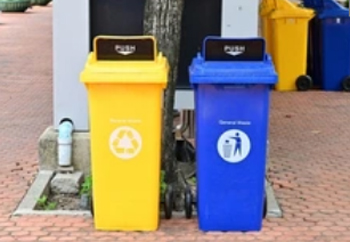
การซื้อของที่นำกลับมาใช้ใหม่ได้แทนที่จะซื้อของแบบใช้ครั้งเดียวทิ้งถือเป็นจุดเริ่มต้นที่ดี รวมถึงพิจารณาว่าสิ่งของที่คุณซื้อทำจากวัสดุรีไซเคิลได้หรือไม่ เพื่อที่สิ่งของเหล่านั้นจะได้นำไปรีไซเคิลได้ในอนาคตเมื่อต้องทิ้ง
หยุดซื้อพลาสติก
อีกวิธีหนึ่งในการลดปริมาณคาร์บอนและขยะคือหยุดซื้อพลาสติกหรือสิ่งของที่ห่อด้วยพลาสติก
ตามข้อมูลของศูนย์กฎหมายสิ่งแวดล้อมระหว่างประเทศ การสร้างพลาสติกอาจส่งผลให้เกิดก๊าซเรือนกระจก 1.34 พันล้านตันภายในปี 2030
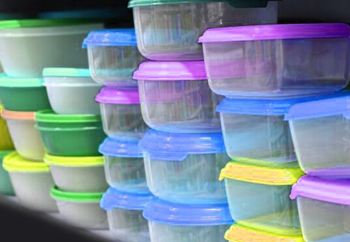
ปัจจุบันซูเปอร์มาร์เก็ตหลายแห่งขายของแบบแยกชิ้นแทน และร้านเติมสินค้าก็ผุดขึ้นทั่วประเทศ ซึ่งคุณสามารถนำภาชนะมาซื้อนม ซีเรียล และพาสต้าได้
พยายามเลือกสินค้าอย่างระมัดระวังโดยมองหาสินค้าที่ไม่ได้ห่อด้วยพลาสติก ซึ่งจะช่วยให้คุณลดปริมาณการมีส่วนสนับสนุนได้อย่างมาก
หยุดการทิ้งอาหาร
ในแต่ละปีมีการทิ้งอาหารประมาณ 1.3 พันล้านตันในสหราชอาณาจักร และขยะอาหารถือเป็นปัญหาใหญ่ระดับโลก ก๊าซเรือนกระจกประมาณ 8 เปอร์เซ็นต์ของโลกเกิดจากขยะอาหาร

ดังนั้น การคิดอย่างรอบคอบมากขึ้นเกี่ยวกับการบริโภคอาหารของคุณและปริมาณขยะที่คุณทิ้งในแต่ละวันจึงเป็นวิธีที่ดีในการลดการปล่อยมลพิษ แม้ว่าจะไม่สามารถโทษครัวเรือนแต่ละแห่งได้ทั้งหมด แต่นี่ก็เป็นก้าวเล็กๆ ในการแก้ไขปัญหานี้
การตรวจสอบตู้เย็นและตู้กับข้าวของคุณอย่างรอบคอบ วางแผนอาหาร วัดปริมาณอาหาร และกินอาหารเหลือเป็นประจำมากขึ้นเป็นขั้นตอนที่ดีในการลดขยะอาหาร
เริ่มทำปุ๋ยหมัก
การทำปุ๋ยหมักยังเป็นส่วนหนึ่งของการลดขยะอาหารและปริมาณคาร์บอนอีกด้วย การศึกษาวิจัยหนึ่งประเมินว่าการปล่อยก๊าซเรือนกระจกจากอาหารที่ทิ้งลงในหลุมฝังกลบนั้นสูงกว่าการปล่อยก๊าซเรือนกระจกจากการทำปุ๋ยหมักจากอาหารชนิดเดียวกันถึง 7 เท่า การทำปุ๋ยหมักจากเศษอาหารในถังขยะที่ดูแลอย่างดีเพื่อให้มีออกซิเจนเข้าไปจะช่วยลดปริมาณมีเทนที่ปล่อยสู่ชั้นบรรยากาศ

รับประทานอาหารมังสวิรัติหรือวีแกน
การรับประทานอาหารมังสวิรัติหรือวีแกนจะส่งผลอย่างมากต่อปริมาณคาร์บอนฟุตพริ้นท์และสภาพอากาศ เนื่องจากเนื้อสัตว์และผลิตภัณฑ์จากนมเป็นสาเหตุของการปล่อยก๊าซเรือนกระจกทั่วโลกถึง 60 เปอร์เซ็นต์ ตามผลการวิจัยในปี 2018
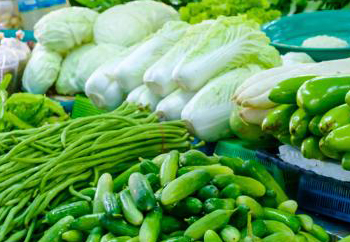
นักวิจัยจากมหาวิทยาลัยออกซ์ฟอร์ดเคยค้นพบว่าการรับประทานอาหารมังสวิรัติสามารถลดปริมาณคาร์บอนฟุตพริ้นท์ได้มากกว่า 70 เปอร์เซ็นต์ ขณะที่นักวิจัยจากมหาวิทยาลัยโลมาลินดาในแคลิฟอร์เนียกล่าวว่ามังสวิรัติมีปริมาณคาร์บอนฟุตพริ้นท์น้อยที่สุดโดยรวม
ทั้งนี้ไม่ได้หมายความว่าคุณต้องเลิกกินชีสหรือเบคอนไปเลย แต่มีผลิตภัณฑ์สำหรับอาหารมังสวิรัติและอาหารจากพืชอยู่มากมาย และการลดการบริโภคเนื้อสัตว์และผลิตภัณฑ์จากนมอาจเป็นประโยชน์อย่างยิ่ง
ทำให้บ้านของคุณประหยัดพลังงานมากขึ้น
ในสหราชอาณาจักร ปริมาณคาร์บอนมากกว่าหนึ่งในห้าของเรามาจากการทำความร้อนและแสงสว่างในบ้าน และการใช้เครื่องใช้ไฟฟ้า น่าเสียดายที่บ้านหลายหลังในสหราชอาณาจักรไม่ได้ประหยัดพลังงานเท่าที่ควร ซึ่งหมายความว่าเราปล่อยคาร์บอนฟุตพริ้นท์มากกว่าที่ควรจะเป็น – ไม่ต้องพูดถึงค่าใช้จ่ายของเรา

ดังนั้น การลดการปล่อยคาร์บอนและการใช้พลังงานที่บ้านจึงเป็นสิ่งสำคัญที่ต้องพิจารณา ในการทำเช่นนี้ ควรใช้ระบบควบคุมความร้อนเพื่อให้แน่ใจว่าคุณไม่ได้ใช้มากเกินความจำเป็น อัปเกรดระบบทำความร้อนเป็นปั๊มความร้อนหากเป็นไปได้ ติดฉนวนกันความร้อนในบ้าน และติดหน้าต่างและพื้นไม้ให้กันลมเข้าออก ถือเป็นขั้นตอนที่ดี
นอกจากนี้ คุณยังสามารถเปลี่ยนหลอดไฟในบ้านเป็นไฟ LED ที่ใช้พลังงานต่ำ รวมถึงซื้อเครื่องใช้ไฟฟ้าประหยัดพลังงานเมื่อเครื่องดูดฝุ่นหรือเครื่องปิ้งขนมปังของคุณหมดอายุการใช้งาน
เปลี่ยนมาใช้พลังงานหมุนเวียน
ผู้ให้บริการไฟฟ้าและก๊าซบางรายมีตัวเลือกในการเปลี่ยนมาใช้พลังงานหมุนเวียนอย่างน้อยบางส่วน
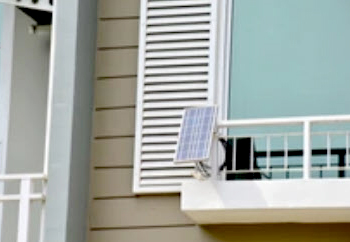
แน่นอนว่านี่อาจเป็นลอตเตอรีรหัสไปรษณีย์ ขึ้นอยู่กับผู้ให้บริการในพื้นที่ของคุณ รวมถึงว่าเป็นตัวเลือกที่เหมาะสมหรือไม่
หากปัจจุบันไม่มีพลังงานหมุนเวียน คุณสามารถสนับสนุนเรื่องนี้กับสมาชิกรัฐสภาหรือบริษัทไฟฟ้าของคุณได้ นอกจากนี้ คุณสามารถสร้างพลังงานเองได้ด้วยแผงโซลาร์เซลล์บนหลังคาเพื่อประหยัดพลังงานในระยะยาวและเพิ่มความปลอดภัยด้านพลังงาน

